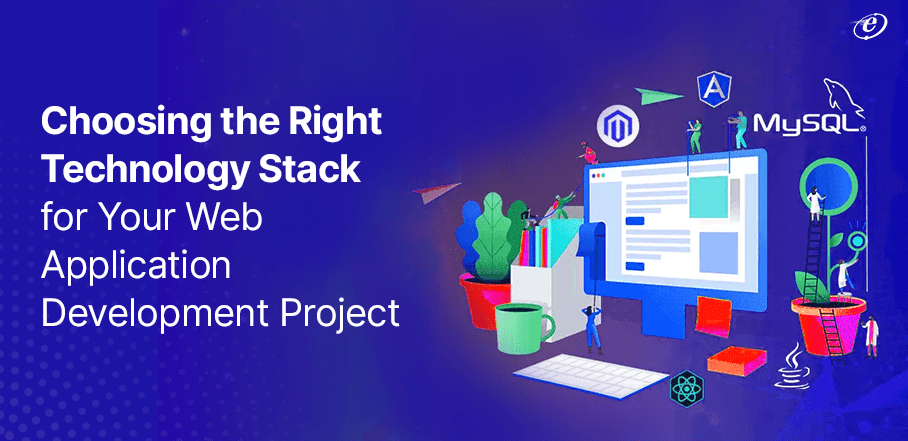Choosing the Right Technology Stack for Your Software Project

Introduction
Selecting the appropriate technology stack is a critical decision when embarking on a software project. The technology stack encompasses the tools, frameworks, programming languages, and databases used to develop and run your software application. Making the right choice can significantly impact the project’s success, from development efficiency to scalability and user experience. In this article, we will explore the factors to consider when choosing a technology stack for your software project, emphasizing the importance of originality and avoiding plagiarism in the decision-making process.
- Project Requirements Assessment
Before delving into the specifics of technology selection, it’s crucial to thoroughly assess your project’s requirements. Consider the following aspects:
Project Goals:
What is the primary objective of your software project? Are you building a web application, a mobile app, or a desktop application? Knowing your goals is essential.
User Base:
Who are your target users? Understanding their needs and preferences can influence your technology choices, such as whether to prioritize mobile or web development.
Functionality:
What features and functionalities do you need in your software? Complex applications may require specific technologies for handling data processing, real-time communication, or scalability.
Scalability:
Consider whether your software needs to scale to accommodate a growing user base. Scalability requirements can impact your technology choices.
- Programming Language
The choice of programming language is a fundamental decision that sets the foundation for your project. Key factors to consider include:
Language Suitability:
Select a language that aligns with your project’s requirements. For web development, options like JavaScript, Python, Ruby, and PHP are popular. For system-level programming, consider languages like C++ or Rust.
Community and Ecosystem:
A vibrant community and a rich ecosystem of libraries and frameworks can greatly facilitate development and problem-solving.
Developer Skill Set:
Assess your development team’s expertise with the chosen language. If they are already proficient in a language, it may be more efficient to leverage their existing skills.
- Frameworks and Libraries
Frameworks and libraries are essential components that streamline development and offer pre-built functionalities. Consider the following:
Web Frameworks:
For web development, popular frameworks like React, Angular, Vue.js (JavaScript), Django (Python), Ruby on Rails (Ruby), and Express.js (Node.js) offer varying degrees of complexity and flexibility.
Mobile Frameworks:
If you’re building mobile applications, you can choose from React Native, Flutter (Dart), or platform-specific options like Swift (iOS) and Kotlin (Android).
Backend Frameworks:
Frameworks like Spring (Java), Express.js (Node.js), Ruby on Rails (Ruby), and Django (Python) simplify backend development.
Database Frameworks:
Consider databases like MySQL, PostgreSQL, MongoDB (NoSQL), or Cassandra, based on your project’s data requirements.
- Infrastructure and Hosting
Decisions about hosting and infrastructure are crucial for deployment and scalability:
Cloud Services:
Cloud platforms like AWS, Azure, Google Cloud, and Heroku offer scalable infrastructure and services. Choose one that aligns with your project’s requirements and budget.
Containerization:
Containers, managed by tools like Docker and Kubernetes, simplify deployment, scaling, and maintenance of applications.
Serverless Computing:
Serverless platforms like AWS Lambda and Azure Functions allow you to run code without provisioning or managing servers.
- Security and Compliance
Security should be a top priority. Consider the following:
Security Standards:
Ensure that your chosen technology stack aligns with industry security standards and best practices. This is particularly crucial if your application handles sensitive data.
Compliance:
If your project needs to comply with specific regulations (e.g., GDPR, HIPAA), select technologies that support compliance requirements.
Security Audits:
Regularly perform security audits and vulnerability assessments to identify and mitigate potential threats.
- Development Team Expertise
Your development team’s skills and familiarity with the chosen technology stack are paramount:
Assess Team Proficiency:
Evaluate your team’s experience and expertise with the technologies you plan to use. Adequate training may be required if new technologies are introduced.
Scalability of Talent:
Consider the availability of developers with expertise in your chosen stack. A technology with a larger talent pool may be advantageous.
- Future-Proofing
Anticipate the future needs of your project:
Long-Term Support:
Ensure that the technologies you select have a long-term support plan. Abandoned or outdated technologies can pose risks.
Scalability:
Choose technologies that can accommodate future growth and changing requirements without significant reengineering.
Avoiding Plagiarism in Decision-Making
Maintaining originality and avoiding plagiarism in the technology selection process is essential for several reasons:
Custom Fit:
Your project is unique, and copying technology choices from others may not adequately address your specific requirements and goals.
Accountability:
Original decisions ensure that you take full responsibility for the project’s success or challenges.
Ethical Considerations:
Plagiarism in technology selection can lead to legal and ethical issues, potentially resulting in intellectual property disputes or project failures.
Conclusion
Choosing the right technology stack for your software project is a pivotal decision that impacts every aspect of development, from functionality to scalability and security. By thoroughly assessing your project’s requirements, considering programming languages, frameworks, infrastructure, and security, and prioritizing your development team’s expertise, you can make informed and original technology choices that align with your project’s goals. Originality in technology selection is vital to ensure that your project is tailor-made to meet its unique challenges and opportunities. By avoiding plagiarism and making informed choices, you pave the way for the successful development and deployment of your software project.



